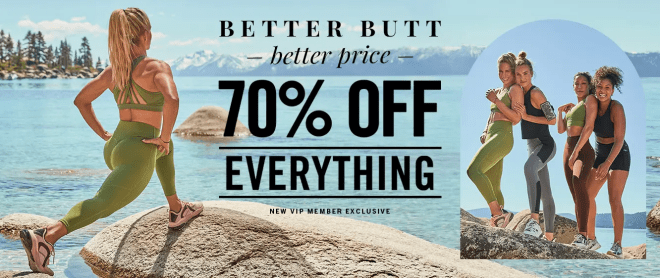Where cardio is concerned, comfort is half the battle—and the right running clothes will make your workouts feel so much better. There are a variety of features to look for, like clothing that will keep you well ventilated, dry when it’s wet outside, cool when it’s hot, or warm when it’s cold.
How do you choose? There are pants, shorts, tights, shirts, and more to consider. Read below for a guide to help you choose what to wear when running.
Running Clothes for Women
Everyone has special considerations to make when choosing clothes for running—and for women, a big consideration is the sports bra. Choose one that offers plenty of support to minimize discomfort and limit the movement of supportive tissues within the breasts.
You should also look for running bras that feature sweat-wicking materials since those that don’t wick sweat can cause chafing.
Running Clothes for Men
For men, the big choice to make is between lined and unlined running shorts. Lined shorts feature built-in underwear, and they’re designed to minimize chafing, wick moisture, and provide breathable compression, which can help increase athletic performance.
However, some men may prefer unlined shorts—especially guys with larger thighs who find the liners pinch or feel uncomfortably tight.
Choosing for the Weather
Running no matter the season? You’ll need to change your wardrobe up depending on the weather. Read below for ideas to put together the right outfit.
In Warm Weather
Go for the clothes that keep you coolest. From your shorts to your tank top or t-shirt to your socks—everything should be breathable to keep you cool, and they should feature moisture-wicking fabrics to draw sweat away from your skin.
In Cold Weather
When temperatures dip, it’s time to switch over to leggings or tights, plus a long-sleeved shirt. Depending on how chilly it is outside, you may want to layer. In extremely cold weather, go for a base layer, second layer, and outer layer.
The base should be moisture-wicking material to pull sweat away and keep it from chilling you. The second layer is all about insulation. It should be breathable, but still offer enough insulation to keep warmth in. The outer layer shields you against the elements—biting winds, rain, snow, and so on. Choose a running jacket that is either waterproof or water repellant if you want to keep the outer layer somewhat breathable.
Features to Consider
Running clothes can come with lots of different bells and whistles, all designed to keep you comfortable and safe when you’re out for a run. Because there are so many different features to think about, we’ve created a list to make it easier for you.
- Anti-chafe seams: As the name suggests, these are clothes with seams that are sewn flat, welded together, or placed in areas that won’t rub (like along the outsides of the legs rather than inside). They’re made this way to prevent seams from chafing your skin while you run.
- Compression: Compression clothes—shorts, tights, socks, and shirts—offer a very snug fit that can increase blood flow and enhance performance.
- Inner liner: Running shorts often feature an inner liner. These are designed to wick moisture, prevent chafing, and offer compression.
- Insulated: Insulated clothes designed for running offer extra warmth, but the layers are usually light to keep the weight of the garment low and to make sure it doesn’t interfere with movement.
- Mesh vents: Clothes with mesh vents—usually tops, but sometimes leggings and shorts, too—are designed to be extremely breathable. Mesh panels let air flow over your skin, keeping you cooler and drier
- Moisture-wicking: Moisture-wicking fabric draws sweat away from your skin, which keeps you dry while preventing chafing.
- Pockets: Running clothes didn’t always come with pockets, but they’re becoming more popular. Pockets are a good choice if you need a place to put your phone, credit card, or other small essentials.
- Quick-dry: These are fabrics made to dry quickly, which is a great feature when you’re really sweating or when you’re running in the rain.
- Reflective: Reflective clothing is a must-have any time between the hours of dusk and dawn. It’ll make you more visible to drivers. For hikers or people running in secluded areas, reflective clothes can also make you more visible should you be injured or need assistance in an area where it might be tough for searchers to spot you.
- Thumbholes: When shopping for long-sleeved shirts and outerwear, thumbholes can prove useful. Put your thumb through them to keep sleeves from riding up. Clothes with thumb holes can also keep your hands warmer, eliminating the need for gloves.
As you can see, there’s a lot to consider when you’re choosing running clothes. Use this as your guide to choose pieces that will keep you comfortable.
Shop Women’s Running Clothes Shop Men’s Running Clothes
Related Articles
Shop related products on Fabletics.com
Women’s Sweatpants Plus Size Activewear For WomenLeggings For Women Men’s Joggers Men’s Leggings Men’s Athletic Shorts

